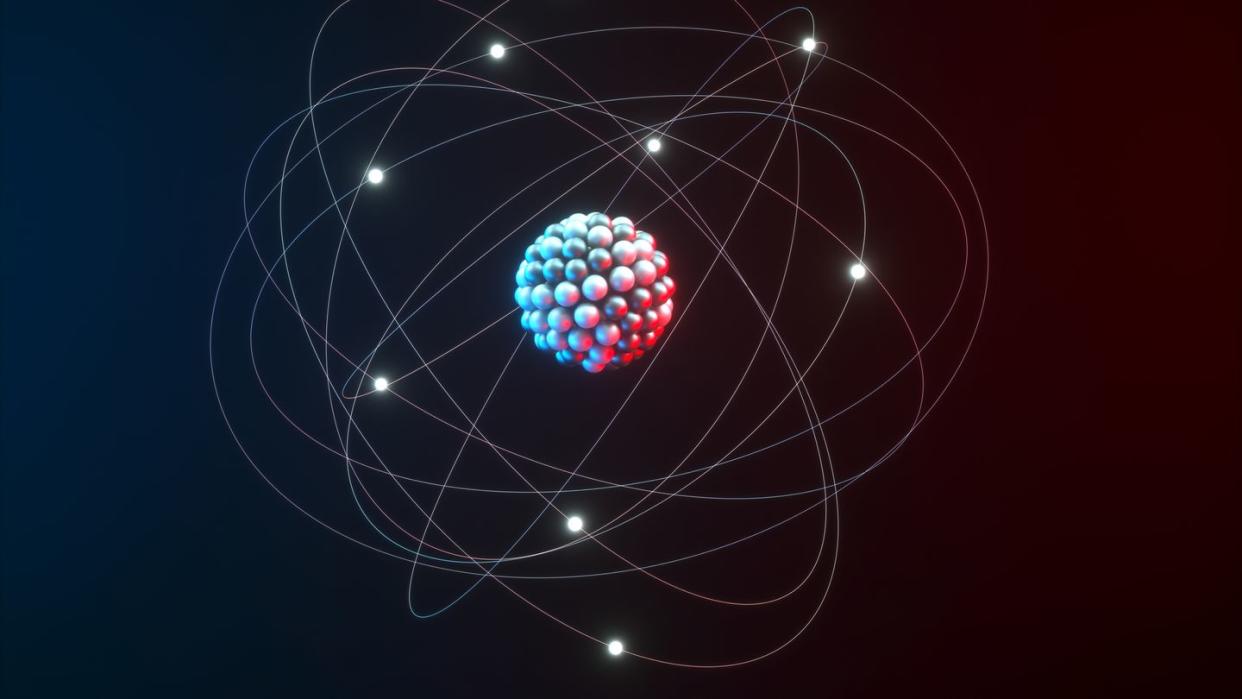Physicists Screwed Around and Unlocked a Bizarre Quantum Behavior

Although electrons are considered elementary particles, meaning they don’t break apart into further subatomic particles, they can be splintered in what’s known as “fractional charge.”
For decades, this required powerful magnets to induce this strange phenomenon, but in recent years, scientists have pulled off the feat without magnetism.
A new study from MIT successfully produced “anomalous” fractional charge using ultra-thin sheets of graphene, flakes of boron nitride, and really, really cold temperatures.
The basic building blocks of all things is the atom—a nucleus of neutrons and protons orbited by electrons. But even protons and neutrons have building blocks known as gluons and quarks. Electrons, on the other hand are elementary particles, meaning they’re not made of smaller particles.
But that doesn’t necessarily mean they can’t be divided into smaller pieces.
In a new paper published in the journal Nature, MIT scientists splintered electrons into fractions of a whole in a rare phenomenon known as “fractional charge.” While this phenomenon has been known for decades, the method by which MIT divvied up the electron definitely raised a few eyebrows. Usually, to obtain this “fractional quantum Hall effect” (as physicists call it), an experiment needs to create a maintained magnetic field, and only recently has the effect been observed outside these powerful magnetic conditions.
But in this study, MIT scientists observed “fractional charge” using a material as simple as a handful of ultra-thin layers of graphene—essentially the stuff that’s in your No. 2 pencil. To achieve this, the researchers stacked five layers of graphene, each only an atom thick, in a staircase-like pattern.
“This five-layer graphene is a material system where many good surprises happen,” co-author Long Ju, assistant professor of physics at MIT, said in a press statement. “Fractional charge is just so exotic, and now we can realize this effect with a much simpler system and without a magnetic field…it could enable the possibility for a type of quantum computing that is more robust against perturbation.”
They sandwiched the graphene layers between two flakes of boron nitride (hBN), which has a similar atomic structure to graphene and which makes electrons interact more strongly. This pairing created a kind of lattice that essentially mimics the usual effects of a magnetic field. Once outfitted with electrodes and cooled to near absolute zero temperatures, the team then witnessed the unexpected “fractional charge.”
“The day we saw it, we didn’t recognize it at first,” Lu said. “Then we started to shout as we realized, this was really big. It was a completely surprising moment.”
This arrangement allowed the electrons to pass through with only a fraction of their charge, creating the first “fractional quantum anomalous Hall effect” (anomalous here meaning “non-magnetic”) in crystalline graphene, according to the MIT press release.
This “fractional quantum Hall effect” was first observed back in 1982 using gallium arsenide and magnets, and the discovery eventually won the trio of researchers the Nobel Prize in Physics in 1998. As Ju explained, the discovery of fractional electron charge was completely unexpected, and no existing theories at the time could explain it. In order to achieve this first instance of “fractional charge,” researchers employed the use of a magnet 10 times stronger than an MRI machine.
It wasn’t until July of 2023 that the first research team discovered a non-magnetic fractional charge using a twisted semiconductor of molybdenum ditelluride, and now graphene joins that “anomalous” list. Discovering more materials like graphene that display a similar effect could be a boon for quantum computing, as the phenomenon can create added protection for qubits during computations.
You Might Also Like
